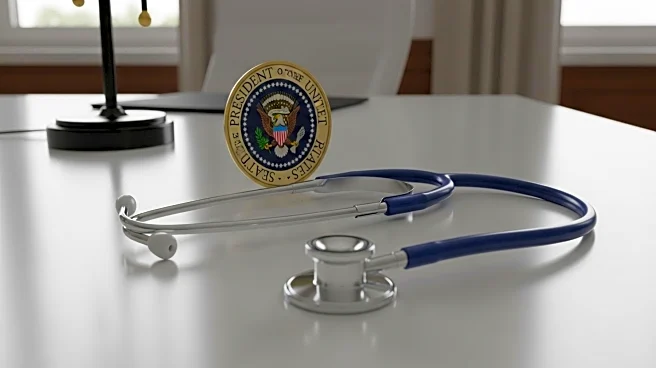What's Happening?
President Donald Trump is undergoing a 'semiannual physical' at Walter Reed National Military Medical Center. This visit follows a previous medical checkup where Trump was diagnosed with chronic venous insufficiency, a condition common in older adults that causes blood to pool in the veins. Despite these health concerns, Trump has been reported to be in 'excellent health' and 'fully fit' to serve as commander in chief. His physician, Navy Capt. Sean Barbabella, noted that Trump has lost 20 pounds since June 2020 and maintains an active lifestyle. The visit comes as Trump prepares to travel to the Middle East following a ceasefire deal in the Israel-Hamas war.
Why It's Important?
The health of President Trump is of significant interest given his role as the leader of the United States. His ability to perform his duties effectively is crucial for national and international stability. The diagnosis of chronic venous insufficiency, while common, raises questions about the long-term health implications for Trump, who is 79 years old. His active lifestyle and weight loss are positive indicators, but ongoing health monitoring is essential. The timing of this physical, just six months after his annual exam, suggests heightened attention to his health status, which could impact his political activities and decision-making.
What's Next?
Following the physical, President Trump is scheduled to return to the White House. His upcoming travel to the Middle East will test his physical endurance and ability to manage international diplomacy. The White House may continue to monitor his health closely, especially given the recent diagnosis. Political leaders and the public will likely watch for any signs of health deterioration that could affect his leadership capabilities.
Beyond the Headlines
The focus on President Trump's health highlights broader issues of transparency and public trust in political leaders' health disclosures. It raises ethical questions about the extent to which personal health information should be shared with the public, especially for individuals in high-stakes positions. This situation may prompt discussions on the adequacy of health assessments for aging leaders and the potential need for more frequent evaluations.










